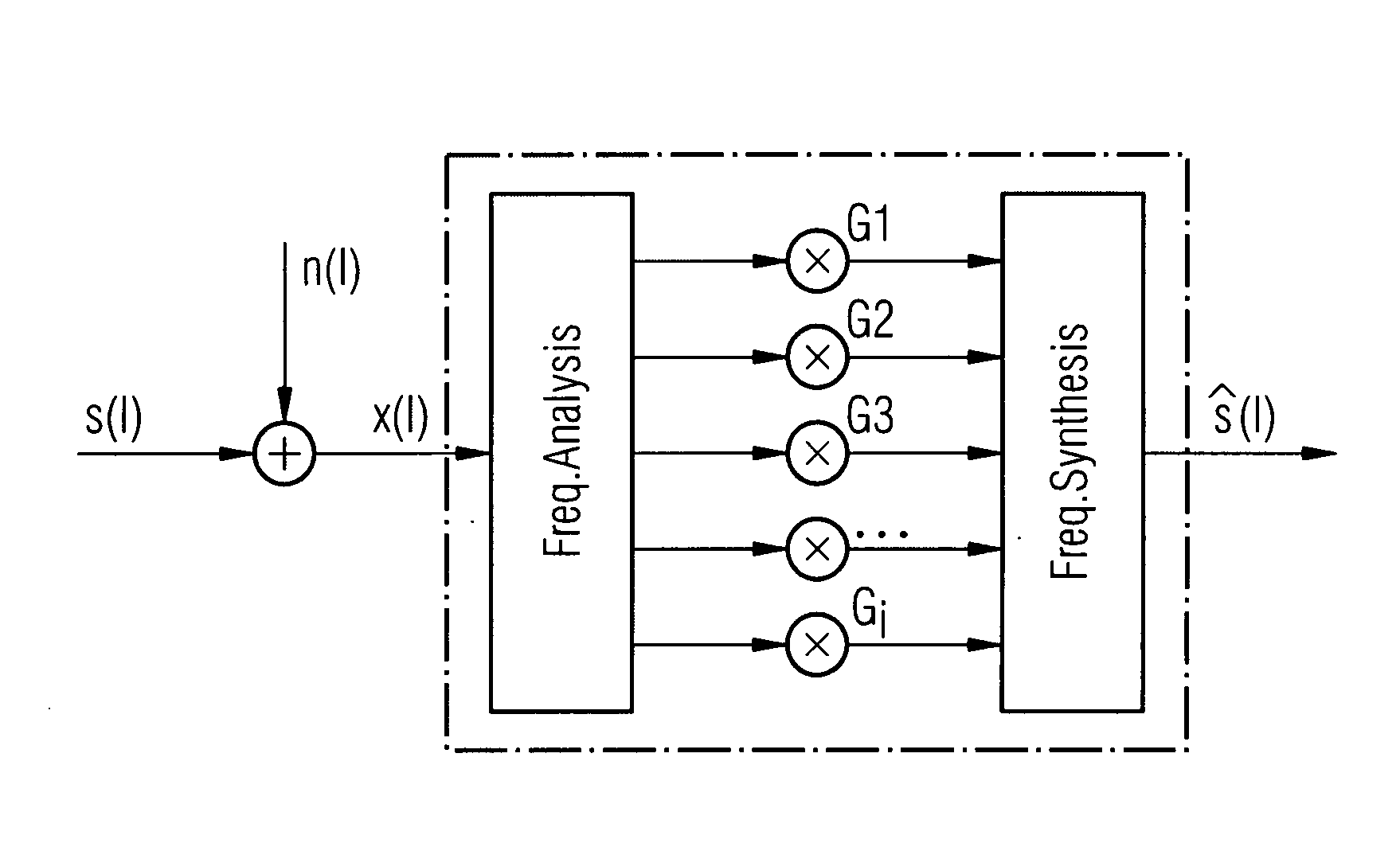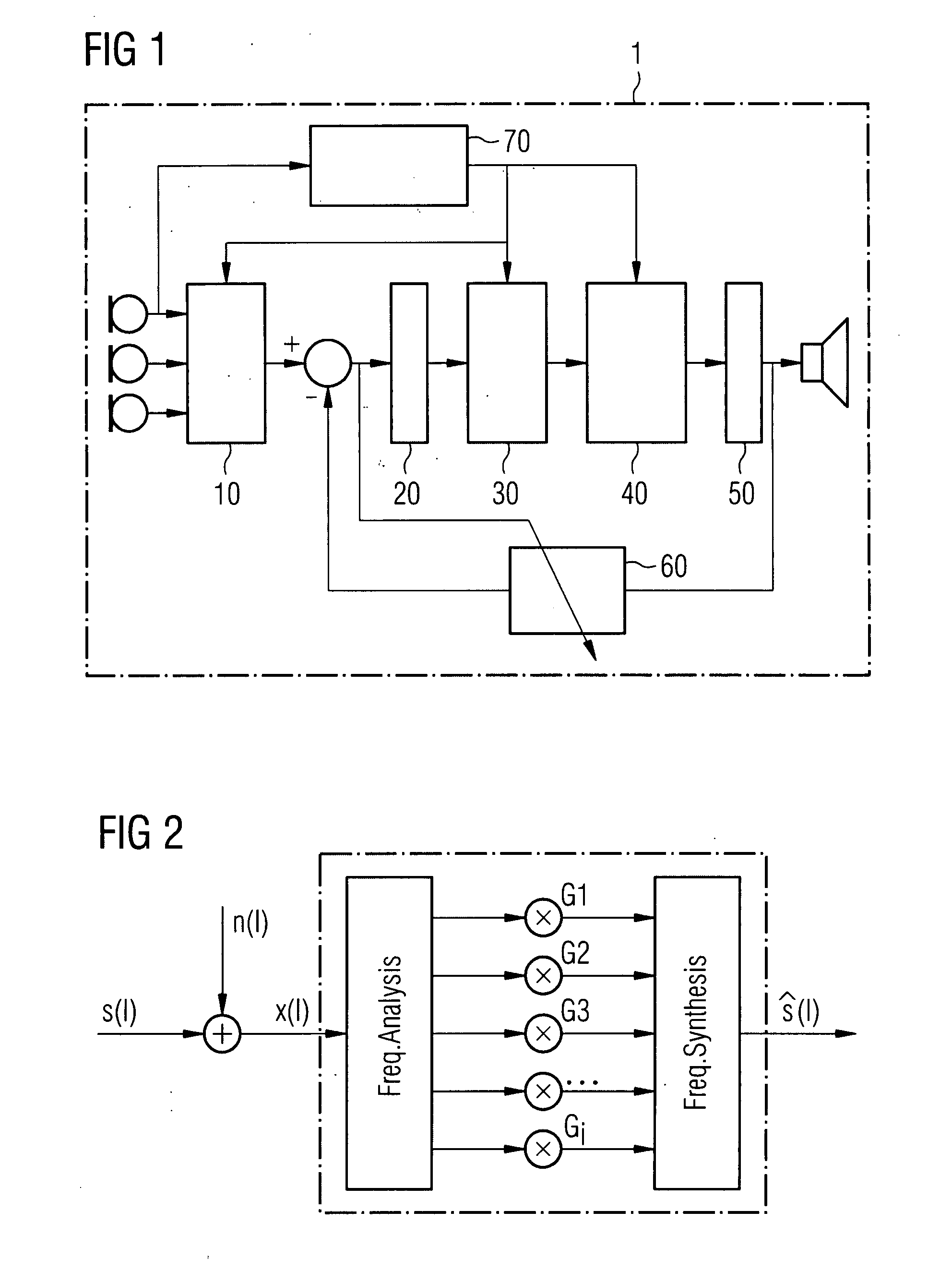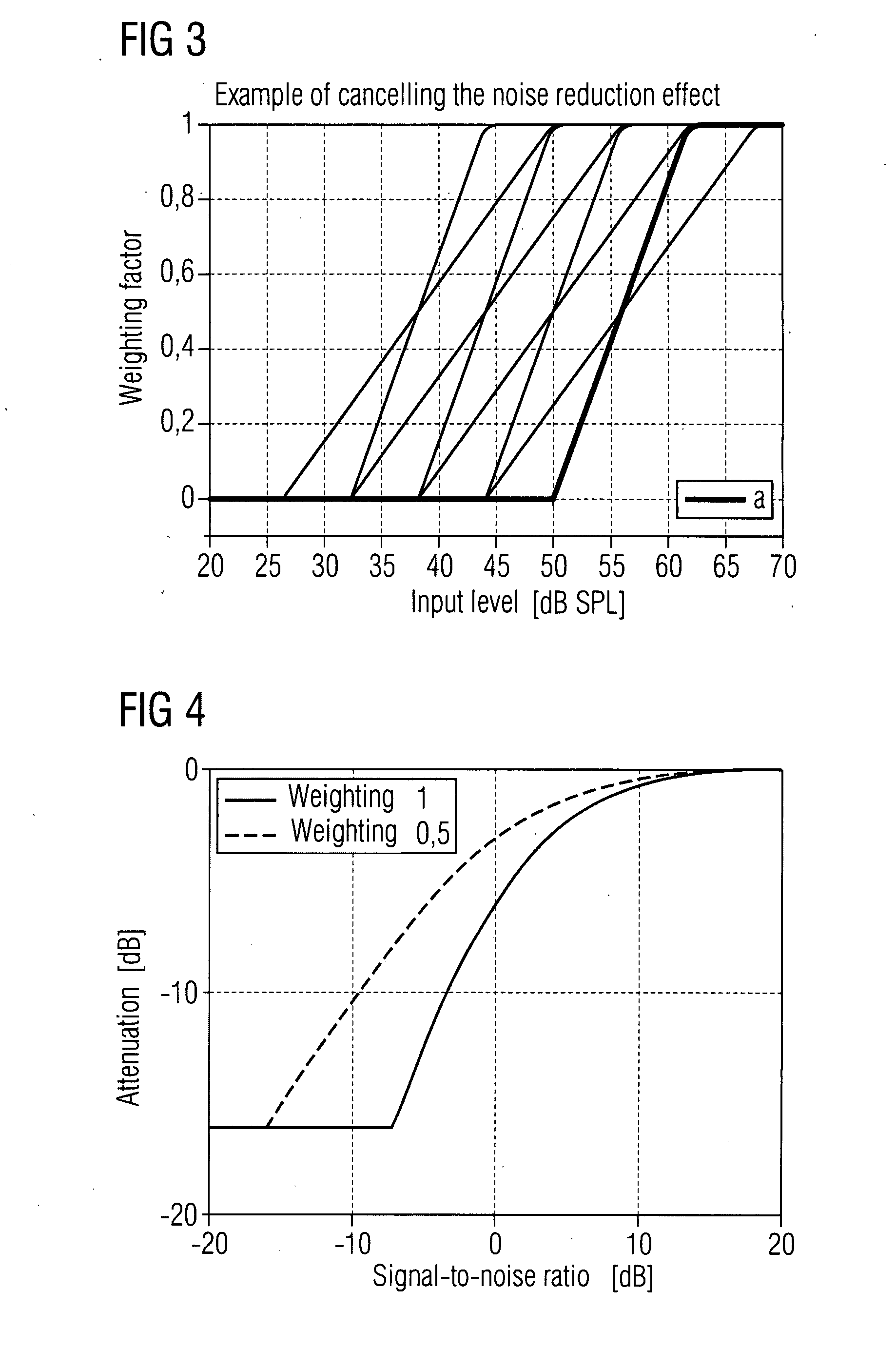Level-dependent noise reduction
- Summary
- Abstract
- Description
- Claims
- Application Information
AI Technical Summary
Benefits of technology
Problems solved by technology
Method used
Image
Examples
Embodiment Construction
[0022]FIG. 1 shows a typical hearing aid device 1, a hearing device for instance. The hearing device 1 comprises a microphone stage 10, which is embodied as a differential directional microphone system for instance. The output signal of the microphone stage 10, consisting of a useful (e.g. speech) and an interference signal, is typically divided into a number of frequency ranges (frequency bands) with the aid of a corresponding frequency analysis facility 20, said frequency ranges being further processed on different frequency channels. The audio signals of the different frequency channels then pass through a noise reduction facility 30, which is typically based on a Wiener filter. The signals of the different frequency bands are continuously weighted here according to their individual signal-to-noise ratio and the respective weighting is accordingly heavily attenuated in different ways. This herewith analyses whether the signals of the individual frequency channels comprise an almo...
PUM
 Login to View More
Login to View More Abstract
Description
Claims
Application Information
 Login to View More
Login to View More - R&D
- Intellectual Property
- Life Sciences
- Materials
- Tech Scout
- Unparalleled Data Quality
- Higher Quality Content
- 60% Fewer Hallucinations
Browse by: Latest US Patents, China's latest patents, Technical Efficacy Thesaurus, Application Domain, Technology Topic, Popular Technical Reports.
© 2025 PatSnap. All rights reserved.Legal|Privacy policy|Modern Slavery Act Transparency Statement|Sitemap|About US| Contact US: help@patsnap.com



